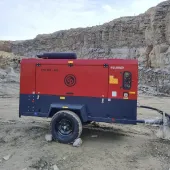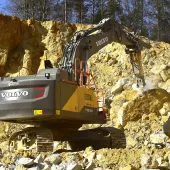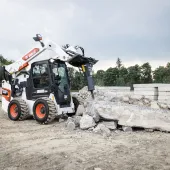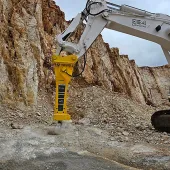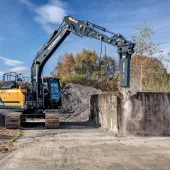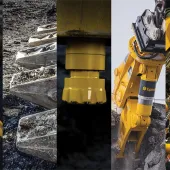Hydraulic Breaker Care and Maintenance
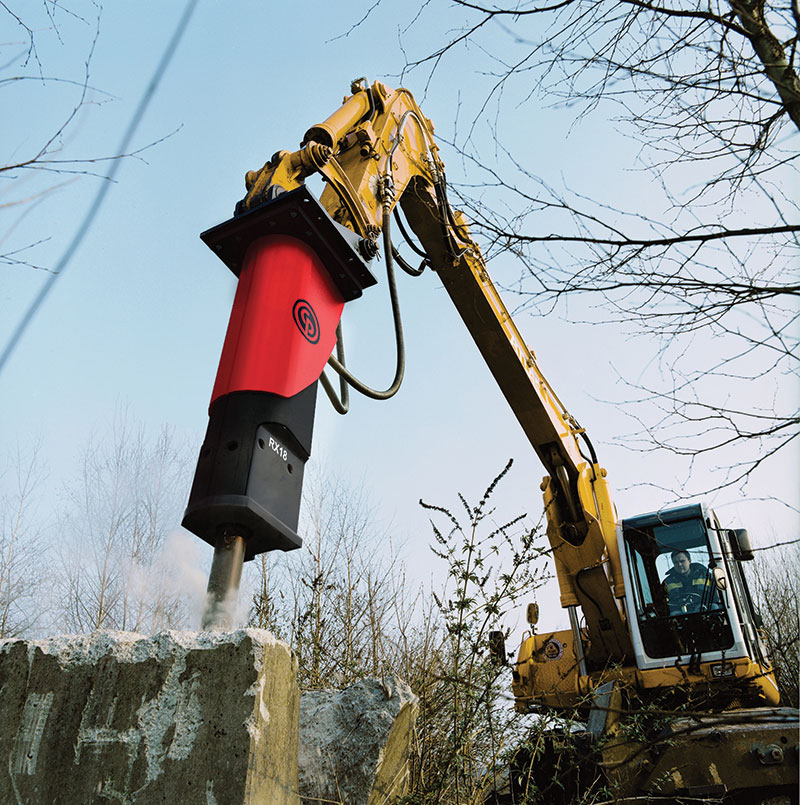
First published in the November 2014 issue of Quarry Management as Don’t Break the Breaker
Ralk Majchrzak, product specialist with Chicago Pneumatic, outlines a two-pronged approach to hydraulic breaker care and maintenance
Meticulous maintenance of a rig-mounted hydraulic breaker is extremely important in guaranteeing its longevity, which will positively impact a company’s bottom line. After all, a rig-mounted breaker is no small investment and, in today’s cost-conscious climate, it makes sense to protect that investment by ensuring the equipment operates effectively and efficiently over the long term. When it comes to caring for a rig-mounted breaker, the approach should be two-pronged:
- Maximizing performance through proper use in the field
- Setting up a hands-on preventative maintenance schedule
The combination of these two practices will lead to a long, productive life for a rig-mounted hydraulic breaker.
In the field
Correct use of a hydraulic breaker in everyday operation can ensure that repairs are minimized, and there are a few things that users can do to make sure they capitalize on their equipment investment.
For example, it is not uncommon for some operators to use the tool on a breaker to pry concrete or rock into a better position. This is one of the worst practices an operator can engage in when it comes to keeping a breaker in optimal condition. Using the hammer as a pry bar causes serious damage, as a result of which the breaker can be impaired or the tool can be bent or break. Wrong positioning during the process can also cause unnecessary wear to important components.
Another important practice to follow in the field is to use a breaker only in short bursts. Running a breaker continuously for more than 15–30 seconds can cause extreme heat build-up and warp the tool, which ultimately decreases performance and productivity. Additionally, breaking is highly effective during the first 10 seconds and becomes very ineffective after 30 seconds, so regular repositioning is required to protect the machine.
Blank firing is another common problem that can affect the longevity of a breaker. It occurs immediately after material is broken when the tool fires against itself, as there is no material beneath it. If the energy from this blow is not absorbed by the rock or concrete, the breaker itself ends up absorbing the force, which can cause unnecessary wear to components. As a result, some manufacturers offer a feature on their breakers, such as Chicago Pneumatic with their PowerStop mode, to reduce the occurrence of blank firing.
Establishing a maintenance plan
The second key process to ensure a rig-mounted hydraulic breaker has a long and productive life is to establish a proactive maintenance plan.
Lubrication is one of the most important means of maintaining a rig-mounted breaker, with a lack of proper lubrication directly correlating to a shorter overall lifespan. To help operators protect their investment, leading manufacturers offer an automatic lubrication system. In the case of Chicago Pneumatic, a feature called CP-Lube is available for all RX breaker models from the RX 14 and upwards.
After the first 50h of use, the carrier’s hydraulic filter should be inspected and, if necessary, changed. Clean hydraulic oil is key to maximizing the life of a breaker. At the 50h mark, it is also a good idea, besides daily maintenance, to perform a thorough check of the breaker and make sure that all bolts are tightened to the required torque. During an inspection it is also recommended that operators check the flow settings and adjust them if necessary.
A knowledgeable operator and a comprehensive maintenance plan go a long way towards maximizing the life of a rig-mounted hydraulic breaker. One practice without the other will not produce optimal results for the unit. It is the combination of proper use and care that will extend the life of a breaker and ultimately benefit the operator’s bottom line.
For more information visit: www.cp.com
- Subscribe to Quarry Management, the monthly journal for the mineral products industry, to read articles before they appear on Agg-Net


